Why Is Iran the Best Option for Septoplasty?
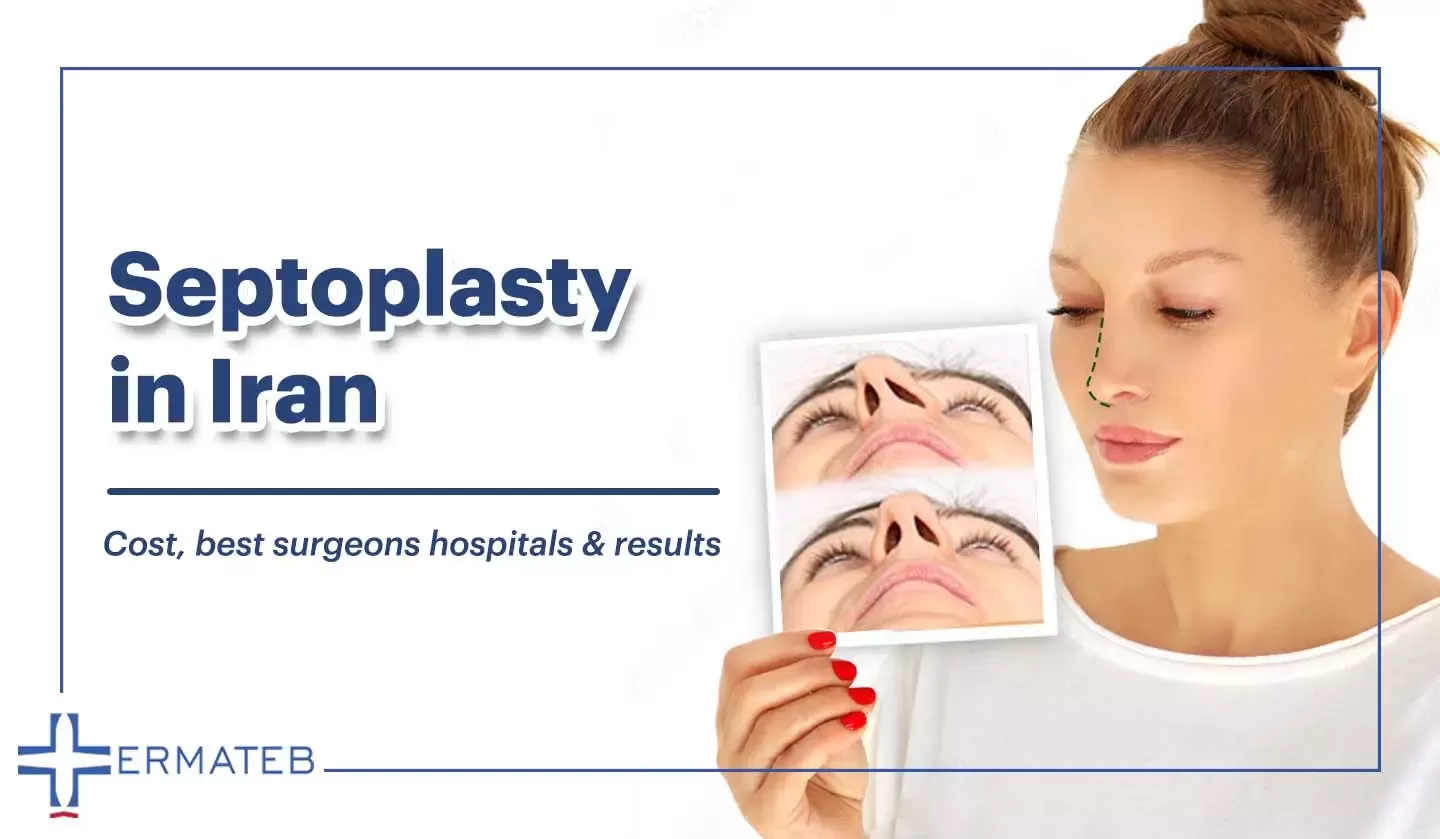
Choosing Iran for medical purposes (Deviated septoplasty surgery in particular) is the most sensible decision one can make due to the reasons below:
- Iran is well-known for its world-class standard hospitals, clinics, laboratories and medical staff
- Iranian physicians, especially ENT (ear, nose, and throat), are considered the most qualified ones in their profession all around the world
- Iran offers medical and beauty services at the most affordable price and the best possible quality, specifically when compared to the countries offering the same medical procedures.
How Much Does Septoplasty Cost in Iran?
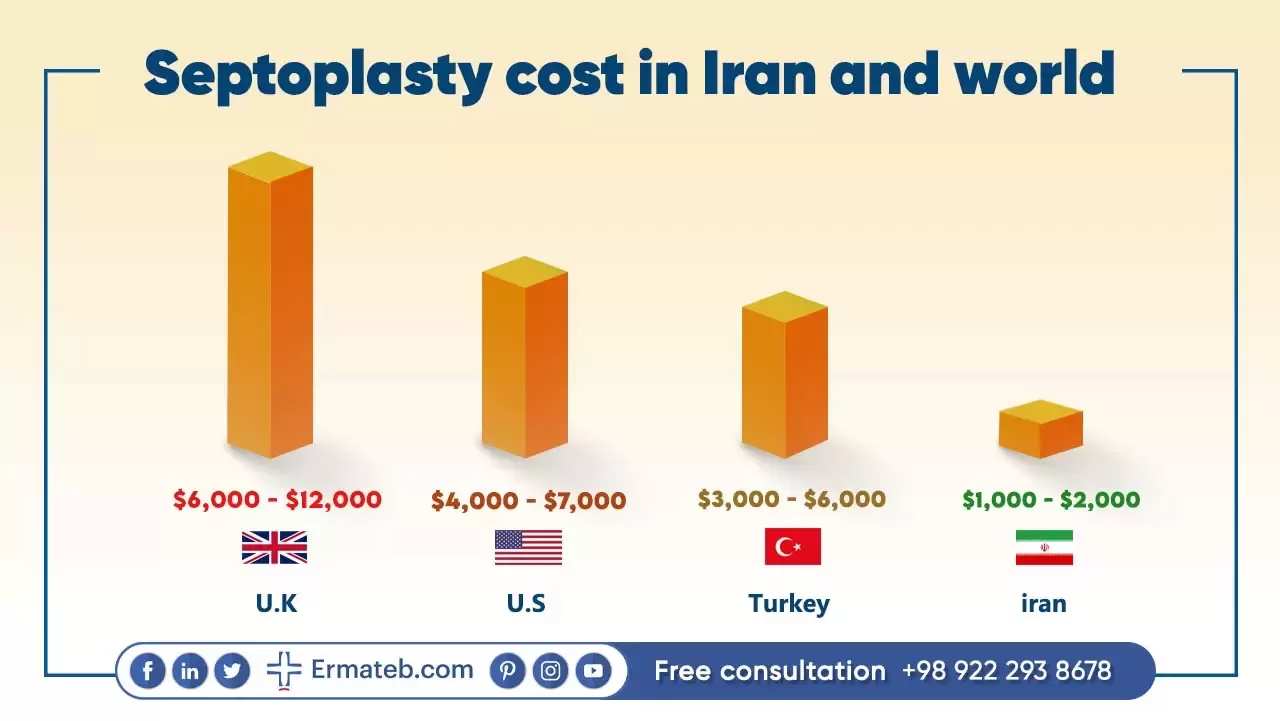
The primary reason to choose Iran for deviated septoplasty surgery, apart from the prolific doctors, surgeons and modern facilities, is the low cost of such surgery.
This is highly outstanding when the cost of Septoplasty in Iran has been compared to that of countries with the same medical procedure. For Instance, the cost of deviated septoplasty surgery in Iran is between $1,000 and $2,000, whereas it ranges from $4000 to $7000 in the U.S., $3000 to $6000 in Turkey, and $6,000 to $12,000 in the U.K.
Why Should You Choose Ermateb?
Ermateb complex is a facilitator in the medical tourism industry. One of the primary goals of this cooperation is to provide the best medical services with the highest quality.
In this Group, we consider the commitment and responsibility for the welfare and comfort of patients as a turning point to provide the best services in the field of medical tourism.
Ermateb has arranged and gathered the most professional and top hospitals, clinics, and doctors who are the best in their field of work.
Everything is ready to help our customers in terms of choosing the best surgeons in order to have their Septoplasty in Iran.
Obtaining a visa, booking flight and accommodations, in addition, transfer services including, picking you up at the airport, transferring to your hotel and hospital, and assigning a personal interpreter and guide in order to help you during your stay and medical procedure, and providing post-operative care, following up the patient and related consultations.
What is Septoplasty?
Septoplasty ( As NEJM Journal Watch said ) is a surgery inside one’s nose to straighten a deviated septum. The nose septum is about 7 centimeters long (2.5 to 3 inches) in adults and consists of cartilage and bone.
Thankfully, opting for septoplasty surgery offers an effective resolution to address this issue and alleviate its associated complications. According to Korean Society of Otorhinolaryngology-Head and Neck Surgery, a notable percentage ranging from 43% to 85% of individuals who have undergone this procedure express satisfaction with the outcomes achieved. Following surgery, they experience enhancements in both the aesthetic appearance and functional aspects of their nose, contributing to overall satisfaction and improved quality of life.
A deviated septum is crooked or bent instead of straight. This can cause to block one of both nostrils and interfere with airflow. A deviated septum can happen due to reasons such as:
- Injury to the nose can cause a deviated septum, for example, sports, falls, car accidents or getting hit in the nose during an accident or a fight
- Birth or congenital problems
- Nose and septum growth toward one side of the nose, which is the typical common reason to have a deviated septum
What Are the Other Methods Used for Septoplasty?
Various methods exist for addressing a deviated septum, ranging from surgical to non-surgical approaches. Surgical techniques like septoplasty and balloon sinuplasty are commonly employed to correct septal defects, providing permanent results. Conversely, non-surgical methods such as laser treatment and filler injections offer alternative options, albeit without the same long-term permanence. The choice of treatment depends on factors like the type and severity of the condition, with surgical interventions being more prevalent due to their efficacy in delivering lasting outcomes.
Balloon Sinuplasty
Alternatively, balloon sinuplasty presents a minimally invasive option for addressing nasal blockages and sinus issues. This endoscopic procedure, performed under local anesthesia, involves inserting a balloon catheter into the sinuses. Once in place, the balloon is inflated to widen the nasal passages, providing relief from sinus congestion and discomfort.
Filler Injection for Septoplasty
Another nonsurgical approach to septoplasty involves the use of fillers. In this procedure, a physician injects filer into the deficient area of the nose to restore balance. This quick procedure, typically lasting only 10 minutes, offers a cost-effective alternative to surgery. Although the results are not permanent, this method provides temporary relief and is considered safe for patients.
Laser Therapy in Septoplasty
While laser treatment alone cannot fully address a deviated septum, it serves as a valuable tool during surgical procedures by enabling bloodless incisions. Laser technology stimulates skin cells and collagen production, expediting the healing process. Moreover, laser therapy proves beneficial in managing other nasal issues such as sinusitis and inflammation.
Symptoms of a Deviated Septum
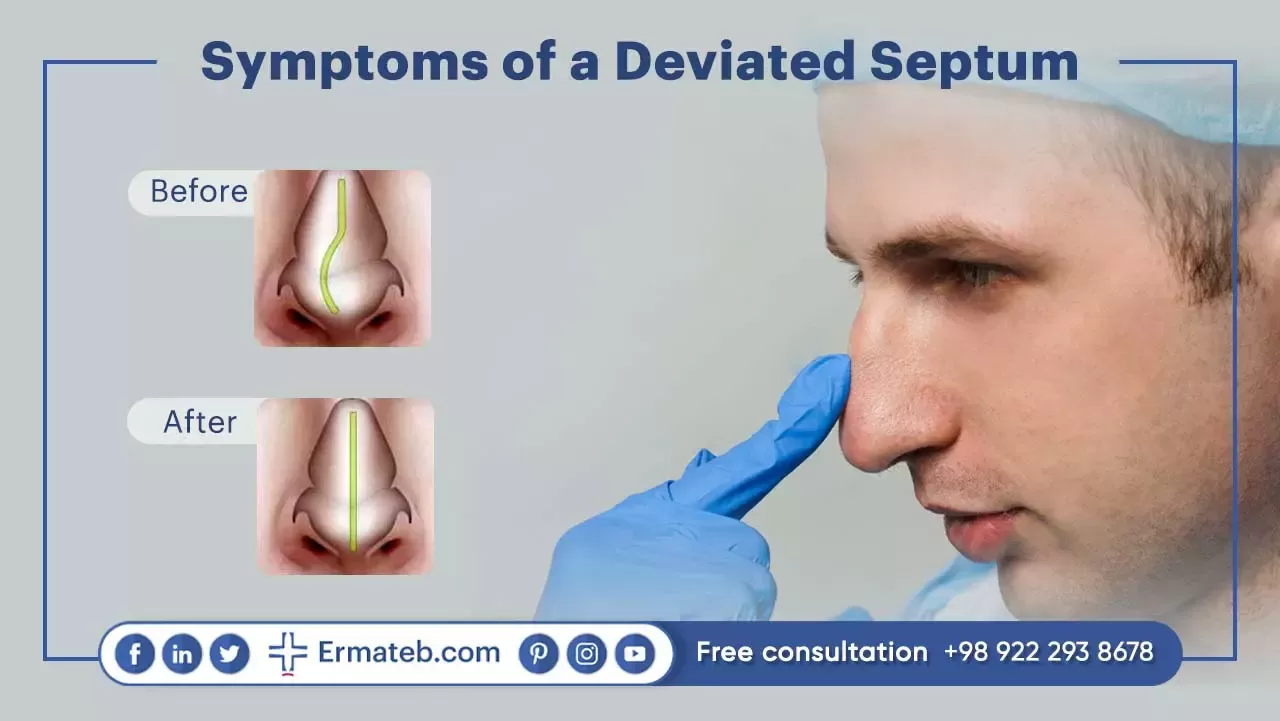
Deviated septums are also very common; estimates show that up to 80% of people have deviated septums.
Those who have deviated septum can have symptoms including:
- Headaches or facial pain
- Snoring
- Sleep apnea
- Sinusitis (inflammation of the sinuses)
- Noisy breathing
- Nosebleeds
- Nasal congestion
- Decreased sense of smell
The main symptom of nasal septal deviation is obstruction of one or both nostrils; this blockage can make breathing difficult through the nostrils.
And there are other signs like nosebleeds; the surface of your septum may become dry, increasing the risk of having nose bleeds or facial pain caused mainly due to a severely deviated septum in which the surface within the nose touch and causes pressure.
There are other symptoms, such as noisy breathing during sleep caused primarily by a deviated septum and swelling of the tissues in your nose, or some people prefer to sleep on a particular side because they can optimize breathing through the nose at night if one nasal passage is narrowed.
There is a term referred to as “Awareness of the nasal cycle” in the nose that alternates between being obstructed on one side and then changing to being obstructed on the other. If one is aware of their nasal cycle, it is not typical, and this indicates nasal obstruction.
Key Points Before and After Septoplasty in Iran
Primarily a deviated septum surgery is performed on an outpatient basis in clinics or hospitals. Before the operation, an anesthesiologist will examine your health and condition preceding the surgery and observe your symptoms during the operation. Please do remember that you have to bring the results of the tests ordered by your doctor on the day of surgery which the surgeon and anesthesiologist will review.
Patients are often told not to take any aspirin or any product containing aspirin for 10 days prior to the operation. In addition, nonsteroidal any-inflammatory drugs such as naproxen or ibuprofen must not be taken for 7 days before the surgery date. For this reason, you indeed have to talk to your doctor about any medication you are taking at the time, even over-the-counter drugs. The emphasis on letting your doctor know about over-the-counter medication is due to the fact that many medical products contain aspirin or ibuprofen, all of which can increase the risk of surgical bleeding.
Before the treatment, patients would be given guidance about what they can and cannot drink or eat. For your information, water, chewing gum and water must also be excluded. Patients who smoke must attempt to cut out or limit the number of cigarettes they smoke because it aims to avoid coughing or bleeding after the surgery.
In case of coming down with an illness the day before the surgery, the patient should call the doctor’s office. And if they get ill on the day of the surgery, the patient will be sent to the surgical hospital for further needed examinations. This is done in order to determine whether or not the surgery is safe to do.
Preoperative Steps Before Septoplasty in Iran
Before undergoing septoplasty in Iran, it’s essential to prepare adequately and communicate effectively with your surgeon. Here are some key considerations to keep in mind:
Medical History Review
Prior to the procedure, consult with a specialist and provide a comprehensive overview of your medical history. Disclose anu existing health conditions and medications you’re currently taking to ensure they won’t pose risks during surgery.
Nose Examination and Photography
During the consultation phase, your physician will conduct a thorough examination of your nose, both internally and externally, to assess suitability for septoplasty. Additionally, capturing photos from various angles helps tailor the surgical approach to your facial features, optimizing both function and aesthetics.
Discuss Expectations
Communicate openly with your surgeon about your expectations for the outcome of septoplasty. Clearly articulating your desired results allows the medical team to align the surgical plan with your goals, enhancing the likelihood of achieving satisfactory post-operative results.
Other Pre-Operation Instructions:
Follow these guidelines to prepare for septoplasty surgery effectively:
- Inform the surgeon about any allergies or bleeding disorders you have.
- Undergo necessary blood tests as recommended by the medical team.
- Refrain from eating or drinking the night before surgery to prevent complications during anesthesia.
By adhering to these preparatory steps and maintaining open communication with your healthcare provider, you can ensure a smoother septoplasty experience and optimize your chances of a successful outcome.
How is Deviated Septum Surgery Performed in Iran?
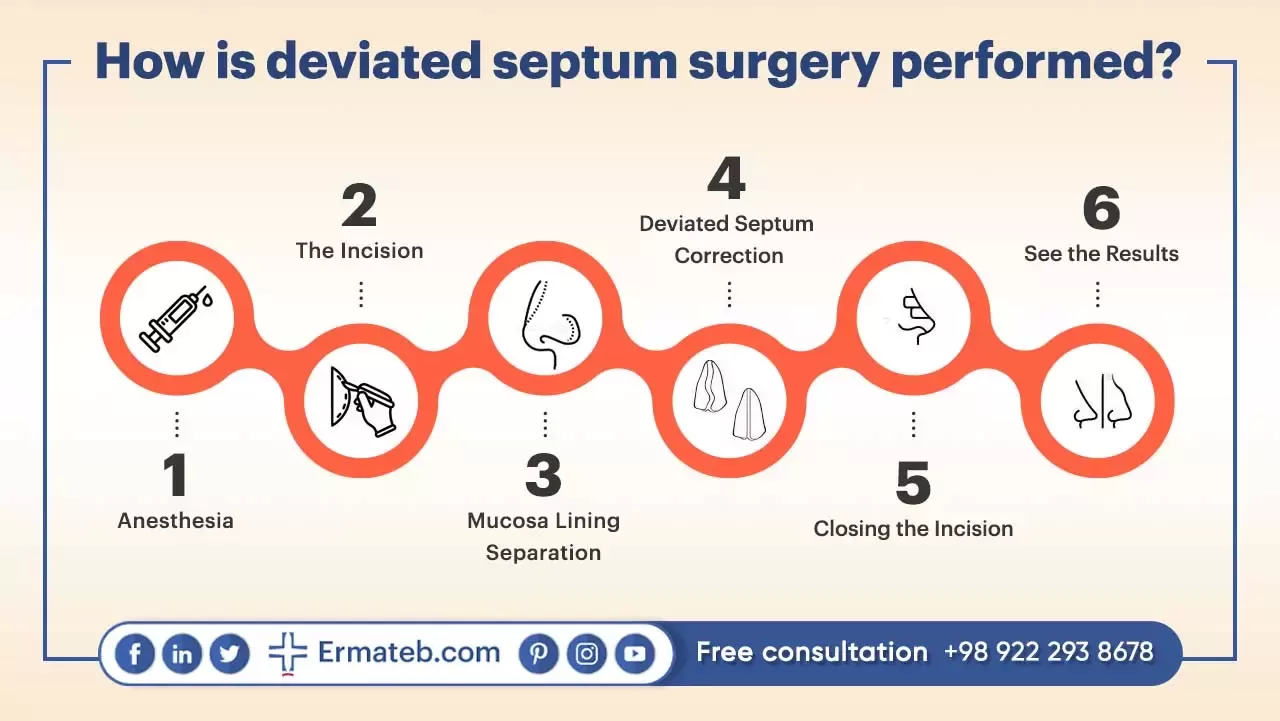
It would be the most hassle-free medical experience of yours if you decide to undergo Septoplasty in Iran, and the following step would be taken below:
Step 1 – Anesthesia
Anesthetic medications would be administered for the patient's comfort during the surgery. The anesthesiologist will usually use a mixture of gas and intravenous medication to put the patient to sleep and maintain the safety and comfort level of the anesthetic sedation. During the operation, the patient will be constantly monitored with instruments such as a pulse oximeter (oxygen saturation) and a cardiac rhythm monitor (EKG). A nurse and a surgical technician would be present for any situation arising in the operating room.
Step 2 - The Incision
The surgeon typically makes an incision inside one of the patient's nostrils, trying to access the nasal septum.
Step 3 – Mucosa Lining Separation
In operation, the surgeon then lifts the mucous membrane at one side, which is covered to protect the septum and then repositions the deviated septum to its correct position. This is a vital step done with meticulous care since the lining is fragile, which may result in a tear or hole in the lining as the doctor lifts away the mucosa from the septum.
Step 4 – Deviated Septum Correction
Reaching the end of the surgery, the surgeon removes the deviated septum (bone and/or cartilage), leaving behind the special mucosal lining.
Moreover, any obstruction, like an extra bone or cartilage, will be removed before the nasal septum repositioning.
Step 5 – Closing the Incision
Finally, once the septum is placed and straightened in the desired and correct position, the surgeon repositions the nasal mucosal lining around the septum and sutures back together.
Step 6 – See the Results
The newly constructed septum would be stabilized and kept in place by splints or packing while it heals. After nearly a week, the splints are removed by your doctor for the post-operative revision. Additionally, your surgeon makes internal sutures when the operation finishes and the sutures dissolve on their own over time or will be removed by your doctor one or two weeks after the surgery.
Patient Follow-up Process After Septoplasty
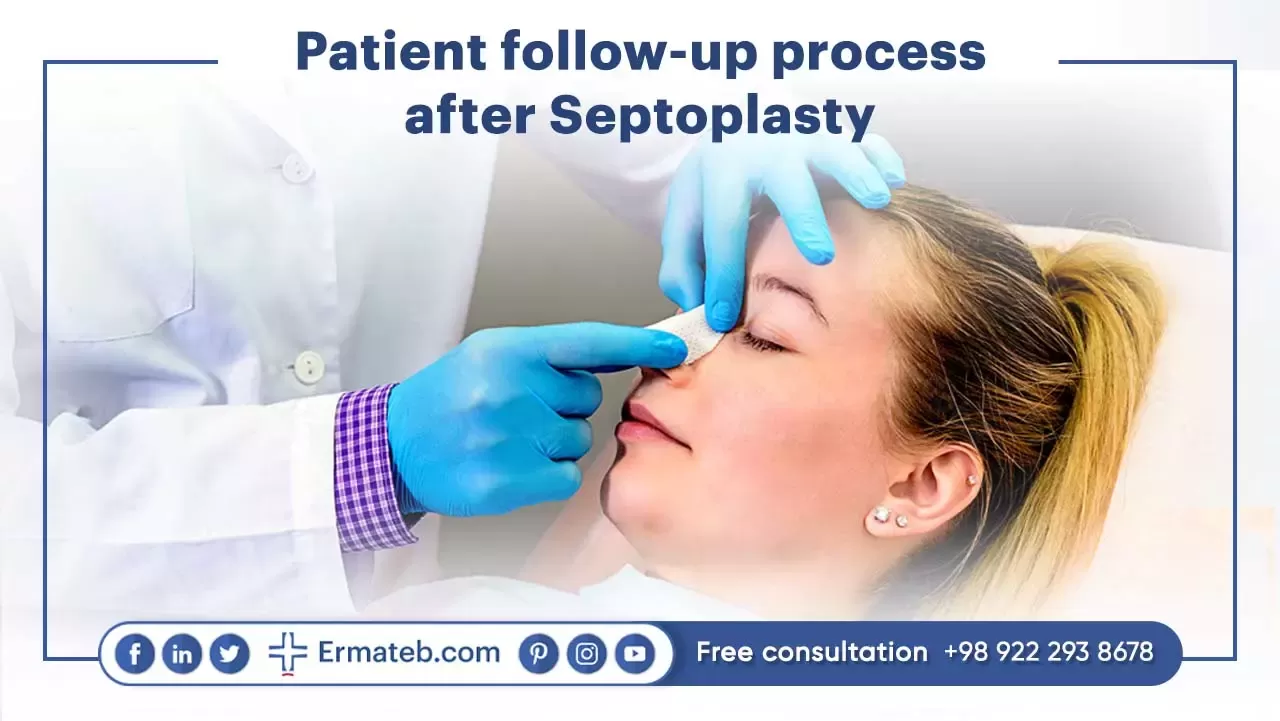
Usually, some sort of pack may be inserted in the nose to control bleeding, and a septal splint would be placed after a few days of surgery; it will be removed by the surgeon the period after the first post-operative visit.
After the surgery, the patient will be informed when to visit the doctor to remove the splints and packs. Knowing that the patient should have someone to drive them from their hotel/home to the doctor's office is crucial.
Fortunately, Ermateb complex will arrange a 24/7 guide plus a driver for picking up and dropping off services for doctor’s visits and emergencies.
A couple of follow-up sessions might be required to evaluate the result of the surgery, the patient's recovery, and debris removal accumulating at the surgical site, mainly if you had sinus surgery simultaneously. These back-to-back visits are crucial after the surgery to expedite recovery time because your nose is more sensitive, and your doctor will utilize anesthetic sprays on your nose before the crust removal.
After removing the packs inside the nose, you can easily breathe through your nose, but you cannot blow your nose or sneeze for about a week. If you have to sneeze, which is naturally unstoppable, keep your mouth open to lessen the pressure on your nose.
Do not panic if you have mild nosebleeds because this is normal in the first days after the surgery and can be stopped by placing ice packs on the nose or keeping the head straightly elevated. If the bleeding continues constantly, call your doctor’s office urgently.
Patients are recommended to rinse their noses with saline and spray during the recovery period after the surgery. And it should be done numerous times a day to prevent blood clots and crusts from forming in the nose.
More importantly, patients are prohibited from using alcohol and tobacco products which may lengthen swelling and recovery. Our recommendation is to avoid as much smoke, dust, and fumes that may affect the nose resulting in infection. Also, you are advised to keep away from tanning up to approximately 6 months after Septoplasty.
Regarding physical and sports activities, you can resume exercising or swimming at least three weeks after the deviated septum surgery. But note that diving is banned for at least two months, and it would be much better to avoid unnecessary traveling for a month.
Risks and Complications of Septoplasty Surgery
Typically, after the surgery, the patient will be taken to the recovery room, where a nurse will watch them.
Anybody having surgery most likely have some type of anesthesia in order to keep the patient from feeling pain during the procedure. While anesthesia is pretty safe, it can contain side effects both during and after the operation, which are minor and temporary.
The common side effects of general anesthesia can be:
Nausea and Vomiting:
This is certainly the very typical side effect of anesthesia which can occur within a few hours or days after the surgery and can be triggered by a number of factors, such as the medication, motion, and the type of surgery.
Sore Throat:
Since the tube is placed in your throat during the operation to help you breathe while you are unconscious can leave you with a sore throat after it's removed.
Headache:
This can happen a few days after the procedure if some spinal fluid leaks out when the regional anesthetic is delivered through the spine, as in an epidural or spinal block for childbirth.
Difficulty Urinating:
Urinating for a little while after the surgery might be fairly difficult if you were numbed from the waist down.
Hematoma:
Bleeding can occur beneath the skin where the anesthesia was injected.
Muscle Aches:
The medications utilized to relax your muscles so a breathing tube can be inserted can cause soreness.
Itching:
This is a very common side effect of narcotics used for general anesthesia.
Post-operative Delirium:
The occurrence of confusion when regaining consciousness after the surgery is very typical, specifically in older patients. The patient would experience sporadic confusion for about a week or so, which can cause disorientation feeling and problems with remembering or focusing. This condition can escalate if you stay in the hospital for a few days after the procedure, particularly intensive care because you are in an unfamiliar place. Accompanied by a loved one, someone like a friend or a close relative can give a hand with doing simple routine activities, wearing your glasses, or putting on and taking off your clothes.
Chills and Shivering (Hypothermia):
This commonly happens in several cases when gaining consciousness after the surgery, and it might happen to everybody which is directly related to your body temperature
Afterward, anesthesia recovery would take about 24 hours, and you can leave the hospital on the day of the surgery. It has to be noted that you'd better be accompanied by a family member or friend to help and stay with you on the first night after the operation.
If you have no companion, our complex will hire a full-time nurse to look after you until you get fully healed from anesthesia and regain full consciousness.
The first thing that needs to be done is to go to bed and relax once the patient arrives at the hotel or home from the surgical center. So, the patient must take precautions when putting their head on the pillow, which two or three other pillows must elevate. This is recommended so as to reduce fluid accumulation in the tissues (edema) and swelling by elevating the head above the heart. The patient has to be careful when getting out of bed with help to use the lavatory. Patients had better avoid any straining when they urinate or defecate. For more comfort, they can take a stool softener or mild laxative if they are constipated.
A few days after the operation, patients should expect swelling in the nose, upper lip, cheeks, and around the eye. But don't worry; the swelling will go away over time which can be minimized by placing as much available ice on the nose bridge, eyes and forehead.
In addition, moderate nasal bleeding is common after surgery for a few days and will surely subside over time. The patient can use gauze dressing (known as a 'mustache dressing') which can absorb blood and need to change when it is fully soaked. It is common to change these dressings every hour, but you usually are not required to wear the dressing within a few days.
Also, patients are cautioned not to take any medications and drugs containing aspirin or nonsteroidal anti-inflammatory drugs (NSAIDs), such as ibuprofen or naproxen.
Another critical stage of your post-operative procedure is eating and drinking diet. It is usually suggested by doctors to have a light, soft and cool diet as tolerated. And the patient needs to stay away from hot liquids for several days after the surgery, plus you’d better start eating slowly in order to avoid nausea and vomiting after the septoplasty surgery. If you experience vomiting once or twice following the operation, that is normal. But if it keeps occurring, you are recommended to make a call to your doctor. He or she might prescribe relatively appropriate medicine to settle your stomach. Anyway, no need to worry about the aforementioned likely problems, for they can be addressed with adequate and proper diet and rest.
After the operation, antibiotics will be prescribed by the doctor, and the patient must take them. Sometimes narcotics and painkillers will be prescribed when the doctor diagnoses the need.
As a result, if you are advised to take such medicines by your doctor, you ought to avoid driving. In more severe cases, doctors can prescribe steroids to reduce inflammation before or after the surgery.
It is highly critical that patients take all the prescribed medications and not stop taking them unless with a doctor’s permission and consultation. Share with your doctor if you are allergic or tolerant to any kind of medicine (a number of people are typically allergic to drugs like penicillin or ibuprofen).
Do you experience nausea or vomiting after the surgery, the doctor may recommend anti-nausea medications.
And lastly, you should not take any over-the-counter medication otherwise with your doctor's approval.
Advantages of Septoplasty Procedure
Septoplasty treatment offers a multitude of advantages that significantly enhance both respiratory function and overall quality of life.
- Septoplasty improves respiratory function by correcting nasal obstructions
- Enhanced airflow leads to reduced snoring, sleep apnea, and improved sleep quality
- Opens obstructed airways, reducing the frequency of sinus infections by aiding mucus drainage
- Patients experience improvements in sensory perception, particularly in smell and taste
- Corrects nasal defects, boosting self-confidence and providing aesthetic enhancement
- Addresses symptoms like chronic snoring, nosebleeds, and sinus headaches, improving overall quality of life
- Can be combined with rhinoplasty for optimized results and minimal downtime
- Safe and minimally invasive procedure typically lasting about an hour
- Patients can return home on the same day with no overnight hospital stay required
- Recovery period of approximately 7-10 days with personalized post-operative instructions
- Essential to choose a qualified cosmetic surgeon experienced in septoplasty and other nasal surgeries for optimal results and maximum relief
How Is Turbinate Reduction Done in Septoplasty Surgery?
Nasal congestion, often exacerbated by enlarged turbinates, can significantly impact breathing and overall quality of life. Turbinectomy, a surgical procedure aimed at relieving severe congestion, offers several benefits for patients struggling with nasal inflammation and recurrent adenoid swelling. This procedure, sometimes performed alongside septoplasty to address deviated nasal septums, employs various techniques tailored to individual cases. By reducing the size of the soft tissue sponges known as turbinates, turbinate reduction surgery restores proper airflow through the nose, particularly beneficial for those experiencing allergies or sleep apnea. Additionally, turbinate reduction can alleviate snoring and improve sleep quality, allowing patients to achieve deeper, more restful sleep. Septoplasty with turbinate reduction, a common combination procedure, not only corrects nasal septum deviations but also ensures optimal turbinate function, facilitating smoother breathing and enhanced airway clearance.
What Is the Difference Between Septoplasty and Rhinoplasty?
Septoplasty, a surgical procedure aimed at correcting internal nasal structures, addresses issues that impede nasal function. The results of septoplasty are typically long-lasting, though gradual changes in cartilage and nasal tissue may occur over time.
In cases where symptoms persist or nasal tissue reshapes, revision septoplasty may be necessary. Performing a revision septoplasty presents challenges similar to those encountered in revision rhinoplasty, sometimes requiring the complete removal, straightening, and replacement of the deviated septum.
Conversely, rhinoplasty, known as a nose job, focuses on reshaping and enhancing the external appearance of the nose. Often, septoplasty and rhinoplasty are combined to achieve both functional and aesthetic improvements (Septorhinoplasty). This integration ensures a comprehensive approach to nasal health and appearance, providing patients with optimal results.


 Arabic
Arabic
 German
German
 Persian (Farsi)
Persian (Farsi)
 Russian
Russian
 Beauty
Beauty






 Medical
Medical





 Hotels
Hotels
 Hospitals
Hospitals































![Frequently asked question about [name]](/v2tem/images/pages/service/faq-image.webp)
